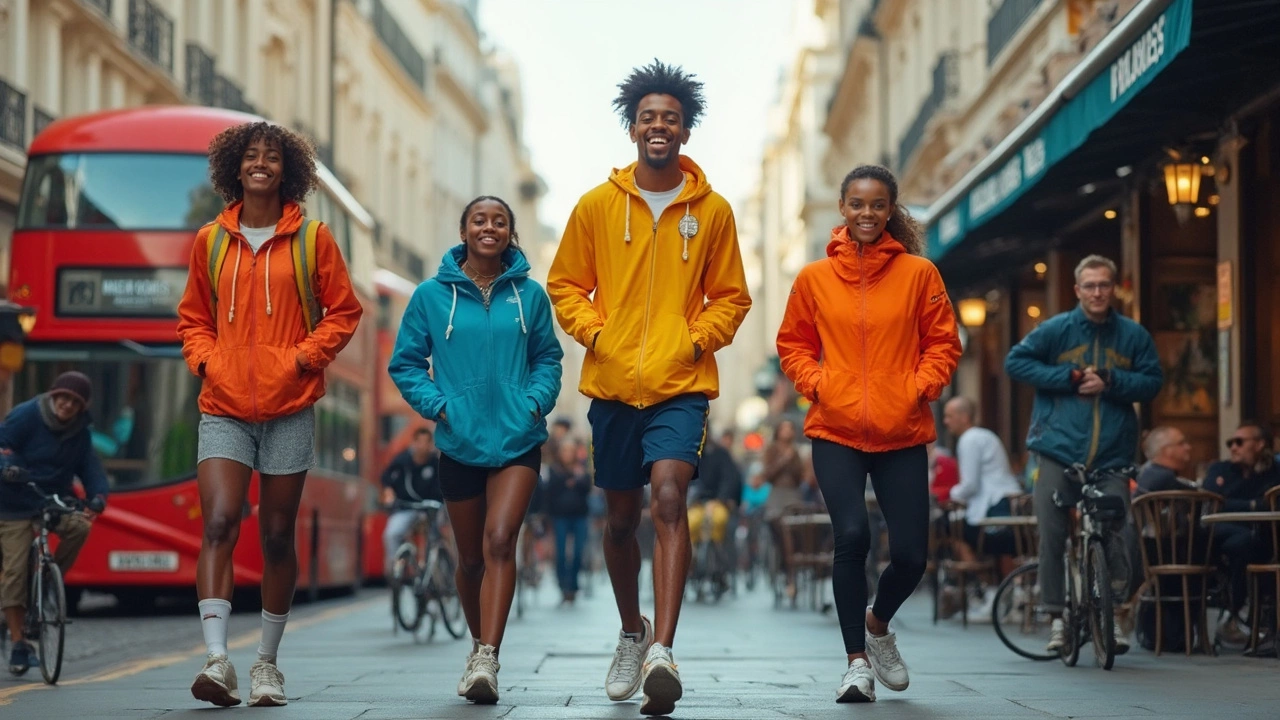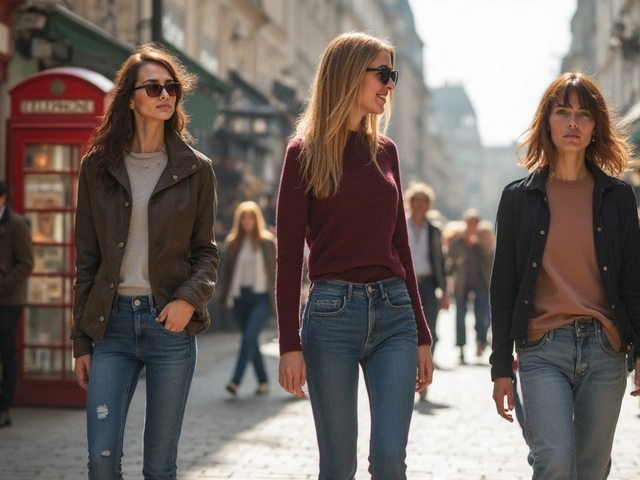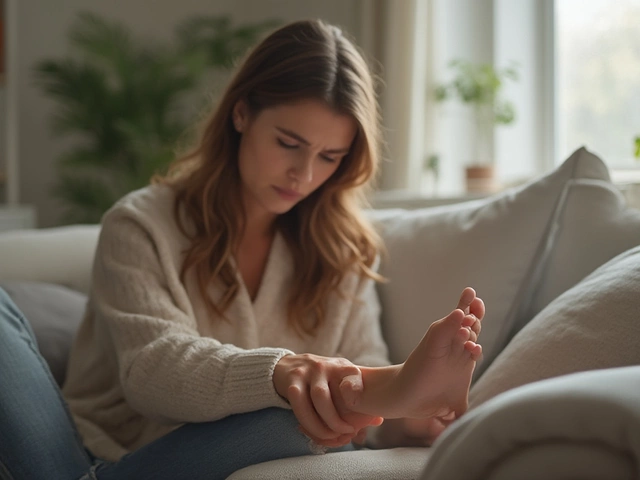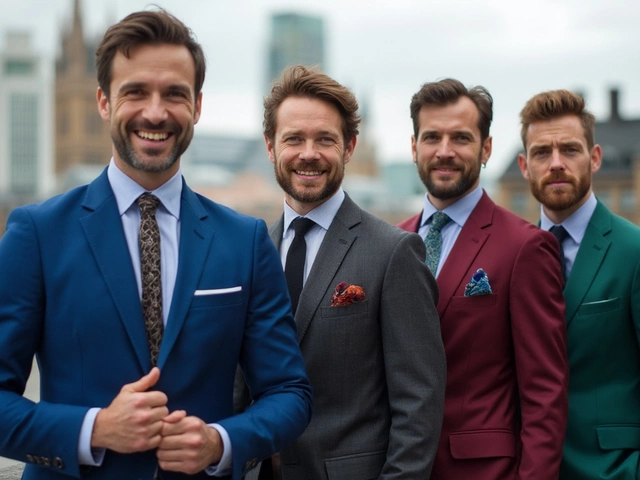Look around—more people are rocking hoodies and joggers than ever, and not just at the gym. Sportswear has pretty much taken over, and honestly, it's not hard to see why. The stuff feels good, moves with you, and doesn’t make you itch or overheat during your day. Who wants to fuss with stiff jeans or button-ups if you don’t have to?
There's another side to it, too. Sportswear isn’t just about sweating at the gym anymore. Athleisure—wearing sporty stuff as everyday outfits—exploded when brands made gear that looked as sharp as regular clothes. Turns out you can throw on a pair of sleek leggings or a track jacket, grab a coffee, and blend right in. That crossover? It's got way more people caring about what their sportswear says about them, not just how it feels.
- The Comfort and Practicality Factor
- Fashion Meets Function: How Sportswear Crossed Over
- Brand Influence and Celebrity Power
- Choosing Sportswear that Actually Works for You
The Comfort and Practicality Factor
Let’s be real—comfort is king, and that’s why sportswear has taken over closets everywhere. Fabrics matter a ton. Modern athletic clothing uses blends like polyester, nylon, and spandex that wick away sweat, breathe easy, and give you full freedom to move. Remember those cotton sweatpants you’d only wear at home? Now there are joggers you can wear all day, anywhere.
Here’s something cool: over 60% of people polled by the Activewear Market Report in 2024 said comfort is their main reason for picking sportswear over regular clothes. The stuff just fits better and doesn’t squeeze or poke where it shouldn’t. Waistbands stretch. Seams are flat so they don’t chafe. Fabric dries fast and keeps you feeling fresh whether you’re walking the dog, commuting, or chasing kids around.
Beyond comfort, there’s a big focus on practicality. Think pockets made for your phone, zip closures that don’t jam, and water-repellent coatings for surprise rain. For busy people, machine-washable and wrinkle-resistant gear is clutch—you toss it in the washer and it’s good as new. No fussing with dry cleaning or ironing.
- Moisture-wicking tech keeps sweat off your skin during a workout or a long day.
- Strategic ventilation (mesh panels or laser-cut holes) keeps you cool.
- Stretchy materials let you move freely, whether you're at the gym or stuck in traffic.
- Durable fabrics mean your gear looks good after tons of wears and washes.
That combo of feeling good and making life easier explains why even people who never step foot in a gym swear by sportswear. It’s all about stuff that works and actually makes your day smoother.
Fashion Meets Function: How Sportswear Crossed Over
The massive jump in sportswear popularity didn’t happen by accident. It started when athletic brands figured out that people want to look good and feel good—without choosing between the two. This shift really kicked off in the 2010s when tight-fitting leggings, breathable sneakers, and zip-up hoodies moved from sweaty gyms to coffee shops and city sidewalks.
Big companies like Nike and Adidas started teaming up with fashion designers. Suddenly, performance clothes landed on fashion runways and in celebrity Instagram feeds. Back in 2014, Adidas partnered with designer Stella McCartney, and that collection sold fast. Even luxury houses like Gucci and Prada are mixing athletic stripes and zip-ups into their main lines now.
If you want numbers, check this out: In 2023, the athleisure market worldwide hit almost $350 billion, according to Statista. The same report expects the market to keep growing as more people work from home and travel in comfort, not just style.
| Year | Global Sportswear Sales (Billion USD) |
|---|---|
| 2020 | 229 |
| 2023 | 348 |
People want their clothes to do more than just look good. Moisture-wicking fabrics, four-way stretch, anti-odor tech—now, even your ‘just hanging out’ clothes come packed with sneaker tech.

Brand Influence and Celebrity Power
When it comes to sportswear, brands and celebrities run the show. Big labels like Nike, Adidas, and Puma pour buckets of cash into endorsements and collaborations with athletes, pop stars, and even social media personalities. It's not just about selling shoes to runners—these companies want their logo on your Instagram feed.
Think about Kanye West’s Yeezy line with Adidas. It turned sneakers into a symbol, not just for gym rats but for anyone who wanted to look hyped and current. Same goes for Nike’s legendary deals with Michael Jordan and Serena Williams—these aren’t just athletes; they’re walking, talking advertisements for athletic clothing that everyone suddenly wants.
What’s wild is how much of a difference a famous face can make. In 2023, the Lyst Index ranked Nike as the world’s hottest brand, right after they dropped viral campaigns with top athletes and musicians. And here’s a table showing how some big sportswear brands boosted their sales by partnering with celebrities and influencers:
| Brand | Notable Collab | Reported Sales Boost (%) |
|---|---|---|
| Nike | Travis Scott sneaker drop | +23% |
| Adidas | Yeezy (Kanye West) | +35% |
| Puma | Rihanna Fenty | +42% |
It’s not just about hype, either. Brands know we watch what celebs wear in airports, on TikTok, or at basketball games, and we copy it. Street style became a runway, and the average person started picking fashion pieces straight from superstar closets.
A good tip? If you care about snagging exclusive drops, follow the brand and the celeb online. They often tease releases or codes early to followers, and those launches sell out fast. The power of big names isn’t fading—if anything, it sets the pace for the next wave of what’s cool in sportswear.
Choosing Sportswear that Actually Works for You
Picking the right sportswear can save you from a sweaty, uncomfortable mess or a total waste of cash. When you shop, it's not all about picking whatever's on sale or what looks cool on a mannequin. The right choice comes down to what your body needs and how you want to use it.
First off, pay attention to fabric. Polyester and nylon wick away sweat, so you don’t end up drenched or stinky—even after a serious workout. If you’re outdoors a lot, look for gear labeled "moisture-wicking" or "quick-dry." Cotton, on the other hand, just soaks up sweat and gets heavy. Not a great move for running or HIIT sessions.
- Athletic clothing with some stretch (like spandex) helps you move easier. No one wants waistband marks or sagging shorts halfway through a jog.
- Pay attention to seams and tags. Flat seams or seamless styles won’t rub or chafe.
- Shoes matter as much as shirts—real talk, the wrong sneakers can hurt your feet and knees. Try before you buy or check out stores that let you return after a test run.
Sizing is key. Sports brands don’t always line up—one brand’s "Medium" might be another's "Large." Don't wing it, measure yourself and check the chart every single time.
Here’s a quick look at which fabrics work best for different activities:
| Activity | Best Fabric |
|---|---|
| Running | Polyester, nylon blends |
| Yoga | Spandex, bamboo blends |
| Casual wear | Cotton-polyester mix |
| HIIT/Gym | Moisture-wicking blends |
If you’re worried about spending too much, try grabbing staples—black leggings, basic tees, a zip-up jacket. These mix and match easily, so you get more looks with less gear. Don’t buy what influencers push just because it’s trending. Focus on what fits and feels good. At the end of the day, quality sportswear should make you want to move, not just look the part.





